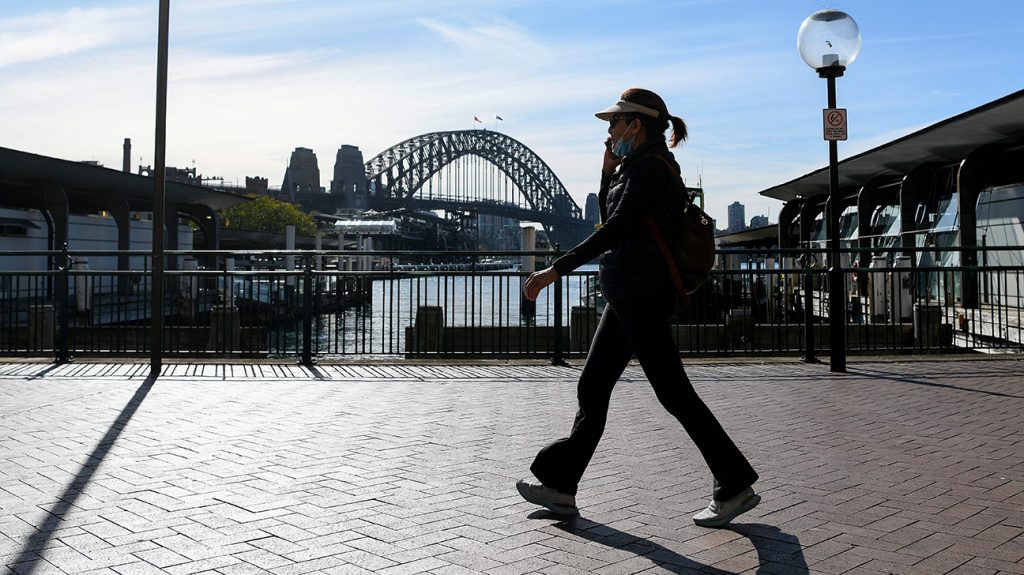Why have COVID-19 cases suddenly surged in Australia?

Australia is trying its utmost to contain fresh outbreaks of COVID-19.
Most of the country has entered into new snap lockdowns, as cases of the delta variant of SARS-CoV-2 spread across several cities. Darwin, Perth, and Brisbane emerged from lockdowns over the weekend.
However, 5.3 million people in Sydney have been on lockdown for a week. The state of New South Wales (NSW), of which Sydney is the capital, also reported 35 locally acquired new cases on Friday and the following Monday, recording its highest number of daily cases for 2021.
This upward trend prompted the government to extend the lockdown to July 16.
To combat the slow uptake of the embattled Oxford-AstraZeneca vaccine, the government also recently made it available to anyone aged under 60 years, and established mass immunization hubs.
But is that enough to explain why there are sudden outbreaks?
What Australia has done so far
Australia’s approach to the COVID-19 pandemic has differed from that of most Western states or the northern hemisphere in general.
Australia has handled the pandemic better than many other nations, experiencing a relatively low rate of infections and recording comparatively fewer deaths. It has owed this success to border closures, strict lockdowns, and rigorous contact tracing.
Since March 2020, the country has largely prohibited overseas arrivals, except for returning Australians and residents and those with exemptions, including visitors from New Zealand. However, 14-day hotel quarantines were mandated for all other international arrivals.
The country was in the process of gradually reopening its borders, with reports of a travel bubble for the United Kingdom or the United States starting to circulate in the media. However, recent outbreaks of the delta variant have prompted the government to keep measures in place and ease at a slower, more controlled pace.
Last week, the government announced that the number of international arrivals would be halved, to 3,000 people per week, starting from July 14.
Fewer than 31,000 reported cases and 910 deaths since the beginning of the pandemic have been a testament to Australia’s successful COVID-19 strategy, which has been termed “COVID zero.”
Just two new COVID-19 cases were enough for Brisbane, the capital of Queensland, to go into a 3-day lockdown.
Speaking to Medical News Today, virologist Dr. Ian Mackay from The University of Queensland said this success stems from their quick response.
“They were prepared, had testing in place, and created guidelines and response plans that saved many lives. Some say Australia has been lucky, but that ignores the enormous amount of behind-the-scenes collaborative work that has gone into keeping Australia safe.”
Calling Australia an “international model” in the fight against the pandemic, Dr. William Schaffner, professor of medicine at the Division of Infectious Diseases at Vanderbilt University in Nashville, TN, said its COVID zero policy was aspirational.
“It sets an expectation around which the population can rally. It puts the population on notice that all will need to contribute, and it informs them that vigorous national public health policies will be employed.”
In comparison, Prof. Schaffner told MNT, the U.S. has not been as successful.
“I see Australia and the U.S. representing the opposite ends of the spectrum of the early responses to COVID-19. Australia acknowledged early the potential gravity of the problem, designed a national response, saw this as a public health rather than a political issue, and communicated clearly to the population.”
However, with the emergence of the delta variant, zero cases may not be a realistic target. Prof. Adrian Esterman, a professor of biostatistics and epidemiology at the University of South Australia in Adelaide, agrees.
“The original lockdown in 2020, in fact, did get us down to zero cases. As for the future, we will have to live with occasional outbreaks, and a suppression approach is more realistic.”
And although Australia’s response to the initial epidemic was praised as one of the best, progress has started to go downhill.
Prof. Esterman said there were three major problems with Australia’s current approach.
It refused to build fit-for-purpose quarantine stations and relied instead on leaky quarantine hotels in the middle of cities. It relied heavily on the AstraZeneca vaccine with not enough early orders for the others. And finally, it insisted that states and territories take the lead when there should be a national approach.
This has led to interstate differences in contact tracing and quarantine systems, lockdowns, and mask-wearing practices, much like in the U.S.
Source: www.medicalnewstoday.com
